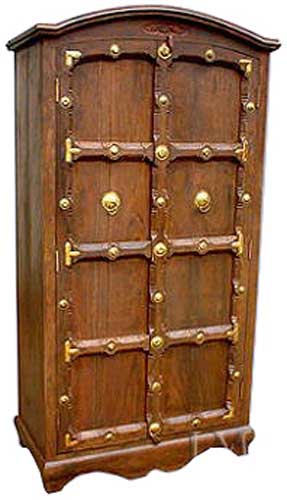Antique Furniture – Is Yours Authentic?
4:17 AM Diposkan oleh Master Kecebong
 Ever wonder if the dining table passed down to you from old Aunt May was worth anything? Visit a garage sale in the neighborhood and saw on old chair that looked like it could be a diamond in the rough? Many people unknowingly own or purchase valuable pieces of antique furniture. If you are the garage sale scavenger, it may be worth your while to learn more about how to figure out if it really is a diamond or just a lump of coal. Although dealers and serious collectors are best able to distinguish a genuine piece of furniture from a replica, a few small bits of knowledge can go a long way in helping you decipher the differences…unless you are planning on taking an expert along with you every weekend!
Ever wonder if the dining table passed down to you from old Aunt May was worth anything? Visit a garage sale in the neighborhood and saw on old chair that looked like it could be a diamond in the rough? Many people unknowingly own or purchase valuable pieces of antique furniture. If you are the garage sale scavenger, it may be worth your while to learn more about how to figure out if it really is a diamond or just a lump of coal. Although dealers and serious collectors are best able to distinguish a genuine piece of furniture from a replica, a few small bits of knowledge can go a long way in helping you decipher the differences…unless you are planning on taking an expert along with you every weekend!True antiques do not often display exact symmetry, as this was impossible to achieve when working solely by hand. It was really with the introduction of the assembly line process with the Model T Ford, that things were imperfect. It was not uncommon for two same pieces of furniture to have parts that were not interchangeable. These pieces are imperfect and small details can usually be spotted, such as rungs and spindles that are not uniform, or shapes that vary somewhat. So, look for furniture that has a hand made or hand worked appearance. Furniture components were not machine-cut until about 1860, so examining the drawers can provide tell-tale signs. If the drawer was constructed using handmade dovetails, it was produced prior to that time. Older pieces also required the use of hand tools, such as planes and draw-knives, which left nicks and marks in the wood.
Another way to identify an antique is by examining the finish. Oil, wax, and milk paint were used on the earliest pieces and eventually replaced by Shellac. By the mid-1800s, lacquer and varnish became popular finishes, helping to date a later piece. It is possible to test for various finishes, much to the dismay of dealers. If a Shellac finish is dabbed with alcohol, it will dissolve. While this is a good test, it is one that should only be used when you have the permission of the seller. Sometimes you can’t always use this test, but it can come in handy, especially if this knowledge is mentioned to a questionable dealer. It can get some to admit whether it is or isn’t real.
Knowing your woods will help tell the difference. Oak represents most of the oldest pieces of furniture, prior to 1700. With the turn of the 18th Century, mahogany and walnut dominated the woodworking world. Pine has always been a popular choice for American products because it is plentiful and easy to manipulate. More valuable pieces can also be found in maple, walnut and cherry, as these types of wood are more valuable on their on. Familiarize yourself with the different colors of the woods, as well as the different grain patterns.
Quality and condition are the final important factors to consider when shopping for antique furniture. Pieces constructed by a particular designer may be declared valuable, regardless of their age or condition. However, in most cases, original components in great condition equal higher worth. It is also worthy to note that handy persons often like to purchase old pieces of furniture for refinishing purposes. Since most antiques are best left in their original state, many experts recommend finding out the value of a particular piece before engaging in any modifications.
At the end of the day, it may be smartest to get an expert opinion of you aren’t sure of the authenticity of your piece of furniture. It is better to spend a few dollars on an expert opinion up front, than to destroy a piece of furniture that could be worth hundreds or thousands of dollars. And it may be better to know before you spend money on something that may be worthless.




0 komentar:
Post a Comment